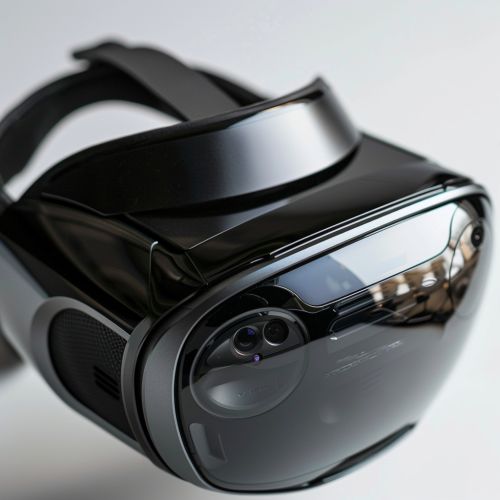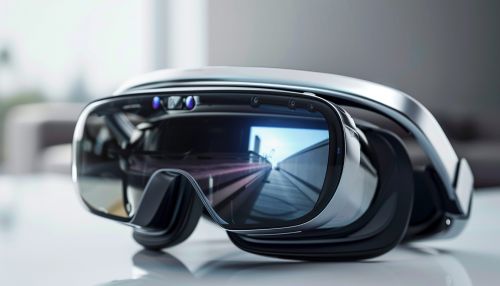Head-Mounted Display
Overview
A head-mounted display (HMD) is a type of wearable technology that presents information to the user through a display device worn on the head. The display can be either monocular (one eye) or binocular (two eyes), and can be used for a variety of applications, including virtual reality (VR), augmented reality (AR), and mixed reality (MR) experiences.


History
The concept of head-mounted displays dates back to the 1960s, with the creation of the first HMD, known as the Sword of Damocles, by Ivan Sutherland and his student Bob Sproull. This system was so named because it was hung from the ceiling, and the user had to be strapped into it, creating a somewhat precarious situation.
Design and Functionality
The design of a head-mounted display typically includes a display module, optics module, and a tracking module. The display module is responsible for generating the images that are viewed by the user. The optics module focuses the images and presents them to the user's eyes. The tracking module tracks the movement of the user's head and adjusts the images accordingly to create a realistic and immersive experience.
Types of Head-Mounted Displays
There are several types of head-mounted displays, each with its own specific use case and design considerations.
Virtual Reality Headsets
Virtual reality headsets are designed to completely immerse the user in a virtual environment. These headsets typically have a wide field of view and high-resolution displays to create a convincing virtual world. Examples of VR headsets include the Oculus Rift, HTC Vive, and PlayStation VR.
Augmented Reality Headsets
Augmented reality headsets overlay digital information onto the real world. These headsets often include cameras and sensors to track the user's environment and adjust the digital overlay accordingly. Examples of AR headsets include the Microsoft HoloLens and Google Glass.
Mixed Reality Headsets
Mixed reality headsets combine elements of both VR and AR to create a hybrid experience. These headsets allow users to interact with both digital objects and the real world simultaneously. An example of a MR headset is the Magic Leap One.
Applications
Head-mounted displays have a wide range of applications, from entertainment and gaming to professional and industrial uses.
Gaming
In the gaming industry, head-mounted displays are used to create immersive virtual reality experiences. These experiences can range from simple 360-degree videos to complex, interactive games.
Professional Training
In professional settings, head-mounted displays are often used for training purposes. For example, pilots may use VR headsets for flight simulation training, while surgeons may use AR headsets to practice surgical procedures.
Industrial Applications
In industrial settings, head-mounted displays can be used for tasks such as remote maintenance, where a technician can see a live feed of a machine's status overlaid on their view of the machine.
Future Developments
The future of head-mounted displays is likely to involve further improvements in display technology, tracking accuracy, and overall user comfort. Additionally, as VR, AR, and MR technologies continue to evolve, we can expect to see new and innovative applications for head-mounted displays.
